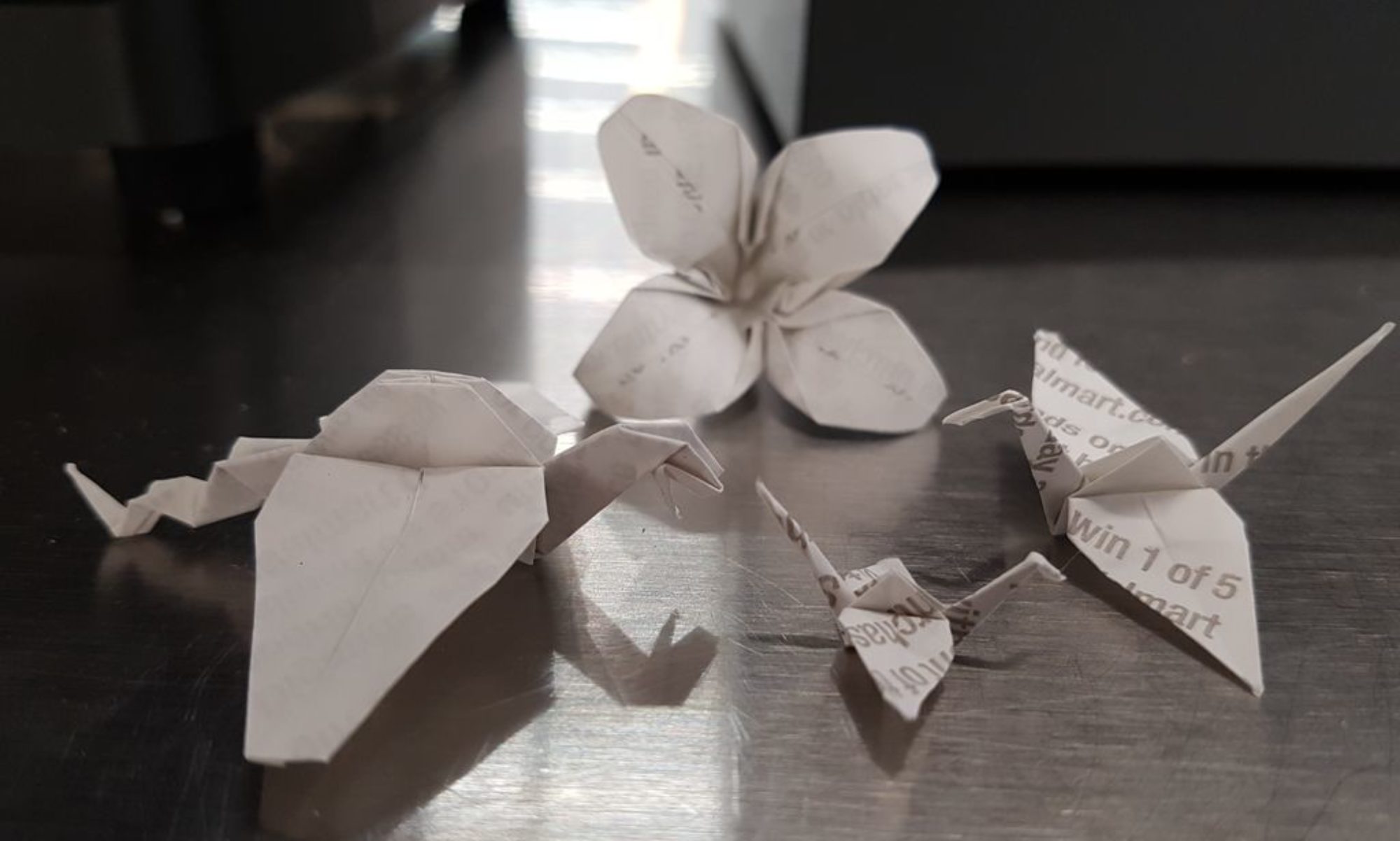I just received my very first order from JetPens. I was first introduced to waterbrushes at a past Animazement. An amazing artist in the Artist Alley had them sitting on her booth table and was so incredibly wonderful that she let me try them out! They’ve been out for years now, but I had never heard of them before. It took me a few months, but I finally was able to set about really looking into them and making a purchase. And… oh…my!
Where have you been all my life?
I chose four brushes to start with in order to see which brand I might prefer, and all of which are the medium size variety. From left to right: I chose the Pentel Aquash, Holbein, Kuretake, and Yasutomo Niji brushes. With the Niji and Kuretake brushes I had seen comments that they were similar, but no information on why, especially as they were two different prices. So I bit the bullet and bought both to compare for myself and to put the information out there for others curious about their similarities and differences.
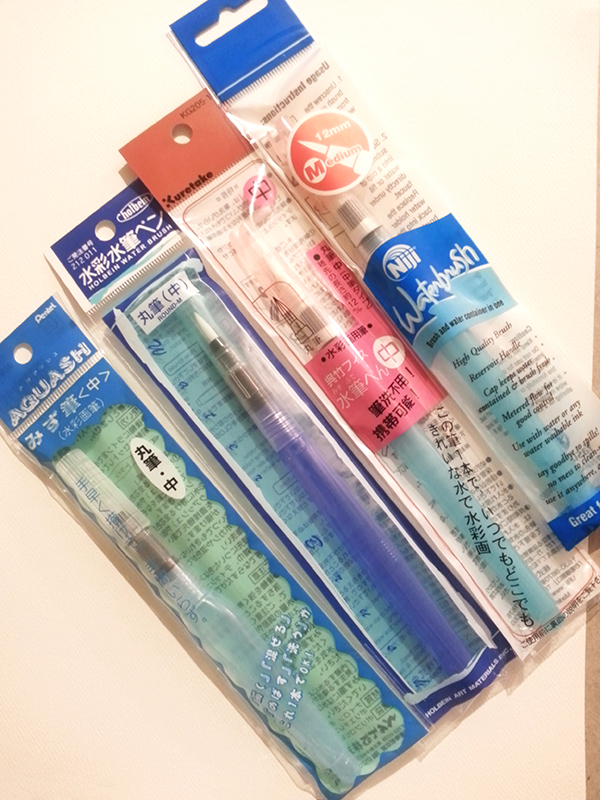
Along with my purchase I couldn’t help but secure a beautiful pen nib I wanted to try out. Figured I could buy some more later in a separate order. Only after I finalized my order did I realize I had no clue where my old pen holder was…. too many moves. Ah well~ This is the very lovely Brause 361 Steno – Blue Pumpkin Calligraphy Pen Nib.
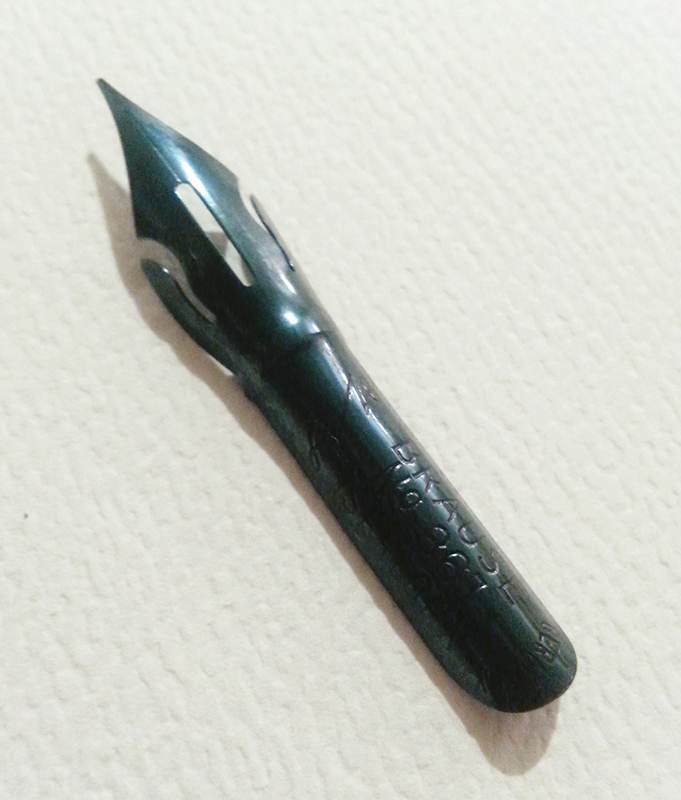
The last item I purchased was a set of Yasutomo Niji Pearlescent Watercolor paints. They are very thin but are nice as subtle, metallic accents.
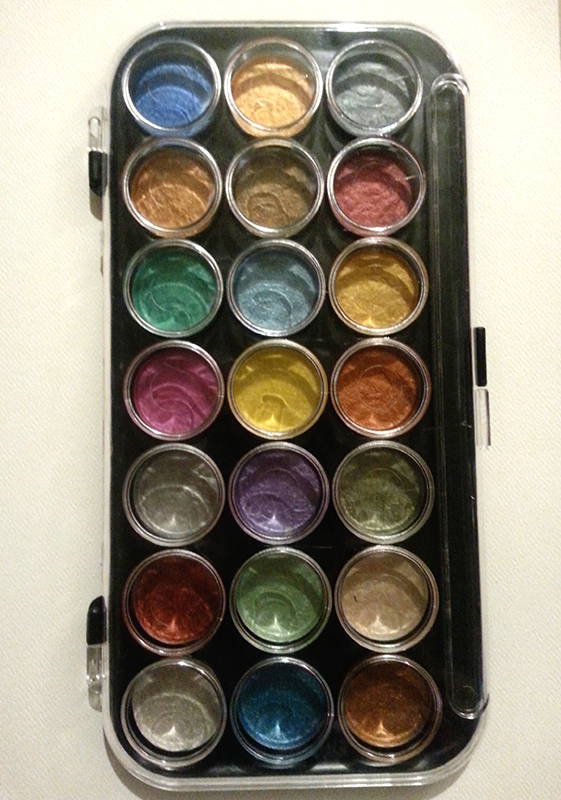
In my general assessment, I noticed each of the brushes has their own unique packaging. What stands out the most here is the difference between the Niji and Kuretake. The Kuretake is in Japanese while the Niji is in English. My theory is that the higher price for the Niji comes from the cost of import and repackaging. They are, essentially, of the same company. Aside from a difference in model numbers, the packaging is the only difference. In all other aspects they are, indeed, identical.
On the bottom of the Kuretake and Niji brushes, the only difference is a 2 or 3 respectively.
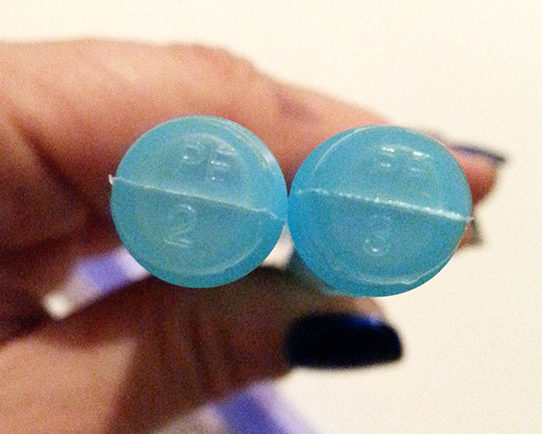
Size wise, the Aquash is shorter, but, interestingly enough, holds about the same amount of liquid as the other pens due to its bulbous shape. It’s also great as a travel brush! The Holbein (dark blue, second from left) is of the hardest plastic. The Aquash is the softest.

Right off the bat I chose to start a sample sheet with examples of each brush. The Aquash is perfect for laying large washes. The Kuretake/Niji are great for gradients and smoothing, and honestly, the better work horses of the bunch. The Holbein was wonderful as a calligraphy brush or anything needing fine handling and lines. I would totally choose this to ink with. However, it was the worst on gradients and subtle washes.
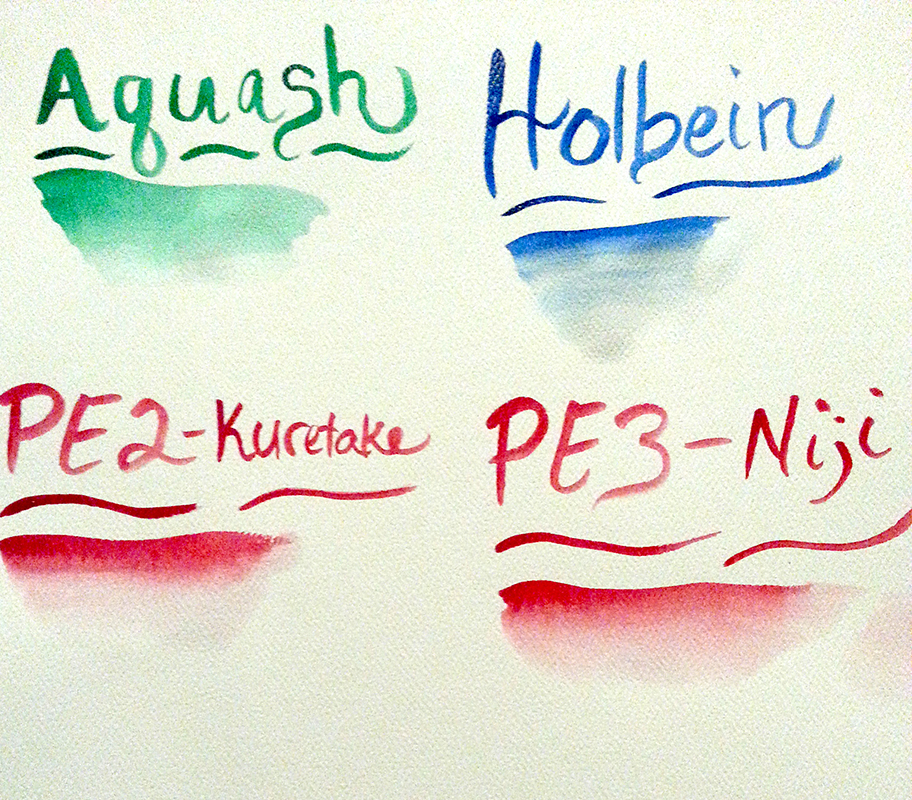
In the end, I like all of them very much and see how they have separate uses depending on the need. Next purchase will be some brushes in different sizes! (And more pen nibs~)
